- Preparing for Winter: The Essential Guide to Fertilising Trees for Optimal Growth and Health
- Introduction
- Why is Fertilising Trees Important?
- Choosing the Right Fertiliser
- Applying Fertiliser
- Timing
- Additional Tips
- Conclusion
- Importance of Fertilising Trees
- 1. Nutrient Deficiency Prevention
- 2. Enhanced Growth and Development
- 3. Improved Disease Resistance
- 4. Increased Longevity
- Types of Fertilisers for Trees
- 1. Organic Fertilisers
- 2. Inorganic Fertilisers
- 3. Slow-Release Fertilisers
- 4. Liquid Fertilisers
- 5. Balanced Fertilisers
- Understanding the Nutritional Needs of Trees
- Macro and Micro Nutrients
- The Role of Soil
- Fertilizers for Tree Nutrition
- Timing and Application of Fertilizers
- Monitoring and Adjusting Nutrient Levels
- Assessing the Soil Quality
- 1. Soil Testing
- 2. Nutrient Analysis
- 3. pH Level
- 4. Organic Matter Content
- 5. Soil Texture
- 6. Compaction
- When to Fertilise Trees
- Spring
- Summer
- Fall
- Winter
- Application Methods for Fertilising Trees
- Avoiding Common Mistakes in Fertilising Trees
- 1. Over-fertilising
- 2. Applying fertiliser too late or too early
- 3. Using the wrong type of fertiliser
- 4. Neglecting soil testing
- 5. Fertilising too close to the trunk
- 6. Neglecting proper watering
- Benefits of Fertilising Trees for Winter Survival
- 1. Enhanced Root System Development
- 2. Increased Winter Hardiness
- 3. Improved Disease and Pest Resistance
- 4. Enhanced Growth and Recovery in Spring
- 5. Overall Health and Longevity
- Question-answer:
- Why is it important to fertilize trees in preparation for winter?
- When is the best time to fertilize trees before winter?
- What kind of fertilizer is best for trees before winter?
- How often should trees be fertilized before winter?
- Are there any specific nutrients that trees need before winter?
- Can over-fertilizing trees before winter be harmful?
- Video: The BEST GUIDE To Fertilizing FRUIT TREES In Spring On The Internet!
Winter is a challenging time for trees, as they face harsh weather conditions and a lack of nutrients in the soil. In order to ensure their optimal growth and health, it is essential to provide trees with the necessary fertilisers. Fertilising trees before winter sets in can help improve their resilience and overall well-being.
When it comes to fertilising trees, there are a few key considerations to keep in mind. First and foremost, it is important to choose the right type of fertiliser. Slow-release fertilisers are generally recommended for trees, as they provide a steady supply of nutrients over an extended period of time. Additionally, organic fertilisers are often preferred, as they are environmentally friendly and promote soil health.
Timing is also crucial when it comes to fertilising trees. It is best to apply fertiliser in late autumn or early winter, before the ground freezes. This gives the fertiliser enough time to penetrate the soil and be absorbed by the tree’s roots. Applying fertiliser too late in the season may not allow trees to fully benefit from its nutrients.
“Providing trees with the proper fertilisation before winter can greatly enhance their ability to withstand the challenges of the cold weather and thrive once spring arrives”
Furthermore, it is important to consider the specific nutritional needs of different tree species. Some trees may require higher levels of certain nutrients, such as nitrogen or phosphorus, while others may require more micronutrients. Conducting a soil test can help determine the exact nutrient requirements of your trees and guide your fertilisation efforts.
Lastly, it is crucial to apply fertiliser correctly to ensure optimal results. Fertiliser should be evenly distributed around the base of the tree and the root zone, avoiding direct contact with the trunk. It is also recommended to water the area after fertiliser application to help activate the nutrients and facilitate their uptake by the tree.
By following these guidelines and providing your trees with the necessary fertilisers before winter arrives, you can ensure their optimal growth and health. Remember, a well-nourished tree is better equipped to withstand the challenges of winter and emerge stronger in the spring.
Preparing for Winter: The Essential Guide to Fertilising Trees for Optimal Growth and Health
Introduction
As winter approaches, it is important to ensure that your trees are properly nourished and prepared for the harsh conditions that lie ahead. Fertilising trees is a crucial step in maintaining their health and promoting optimal growth. In this guide, we will provide you with essential tips and techniques to help you fertilise your trees effectively.
Why is Fertilising Trees Important?
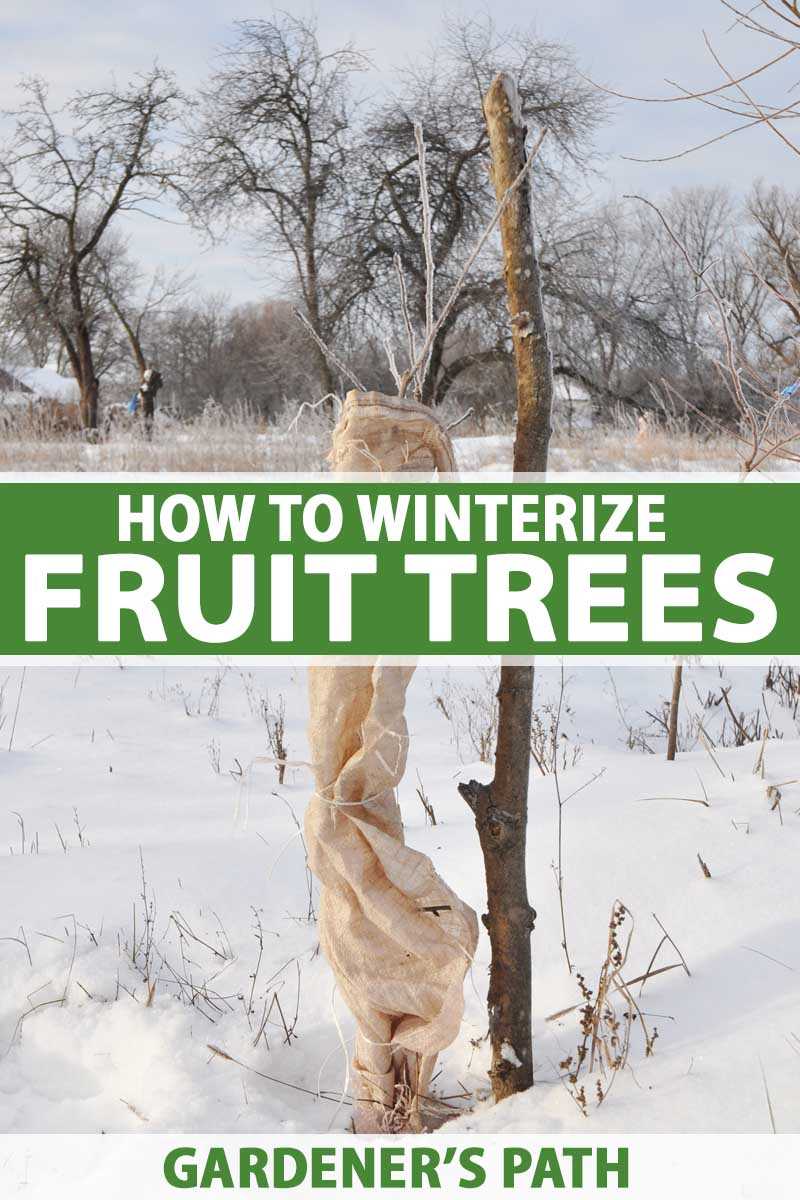
Proper fertilisation provides trees with the necessary nutrients they need to thrive. During winter, trees face stress from cold temperatures, lack of sunlight, and other environmental factors. Fertilising strengthens their immune system, improves their resistance to diseases, and promotes healthy growth.
Choosing the Right Fertiliser
When selecting a fertiliser for your trees, it is important to consider their specific nutritional needs. Different trees require different nutrients in varying ratios. Look for slow-release or organic fertilisers that provide a balanced blend of essential elements like nitrogen, phosphorus, and potassium.
Applying Fertiliser
Here are the steps to effectively apply fertiliser to your trees:
- Measure the diameter of the tree trunk at chest height, as this will determine the amount of fertiliser needed.
- Spread the fertiliser evenly around the base of the tree, extending it out to the tree drip line.
- Avoid applying fertiliser directly against the trunk, as this can cause damage.
- Gently incorporate the fertiliser into the topsoil with a rake or by lightly watering the area.
- Water the area thoroughly after fertilising to help the nutrients penetrate the soil and reach the roots.
Timing
The best time to fertilise your trees before winter is in the late fall, around 4-6 weeks before the ground freezes. This allows the trees to absorb and store the nutrients they need to sustain themselves through the cold winter months.
Additional Tips
- Avoid over-fertilising, as this can lead to nutrient imbalances and other issues.
- Regularly monitor the health and growth of your trees to assess their fertiliser requirements.
- Consider getting a soil test done to determine any nutrient deficiencies or pH imbalances.
- Use mulch around the base of the tree to conserve moisture and provide additional nutrients.
- Consult with a professional arborist for specific fertiliser recommendations based on your tree’s species and location.
Conclusion
By following these essential tips for fertilising your trees, you can ensure optimal growth and health even in the harshest winter conditions. Take the time to properly nourish your trees, and they will reward you with abundant foliage and vibrant growth come spring.
Importance of Fertilising Trees
Fertilising trees is an essential part of their care and maintenance, especially when preparing for winter. Fertilisers provide the necessary nutrients that trees need to grow and thrive. By ensuring that trees have access to the right balance of nutrients, property owners can promote optimal growth, health, and resistance to disease.
1. Nutrient Deficiency Prevention
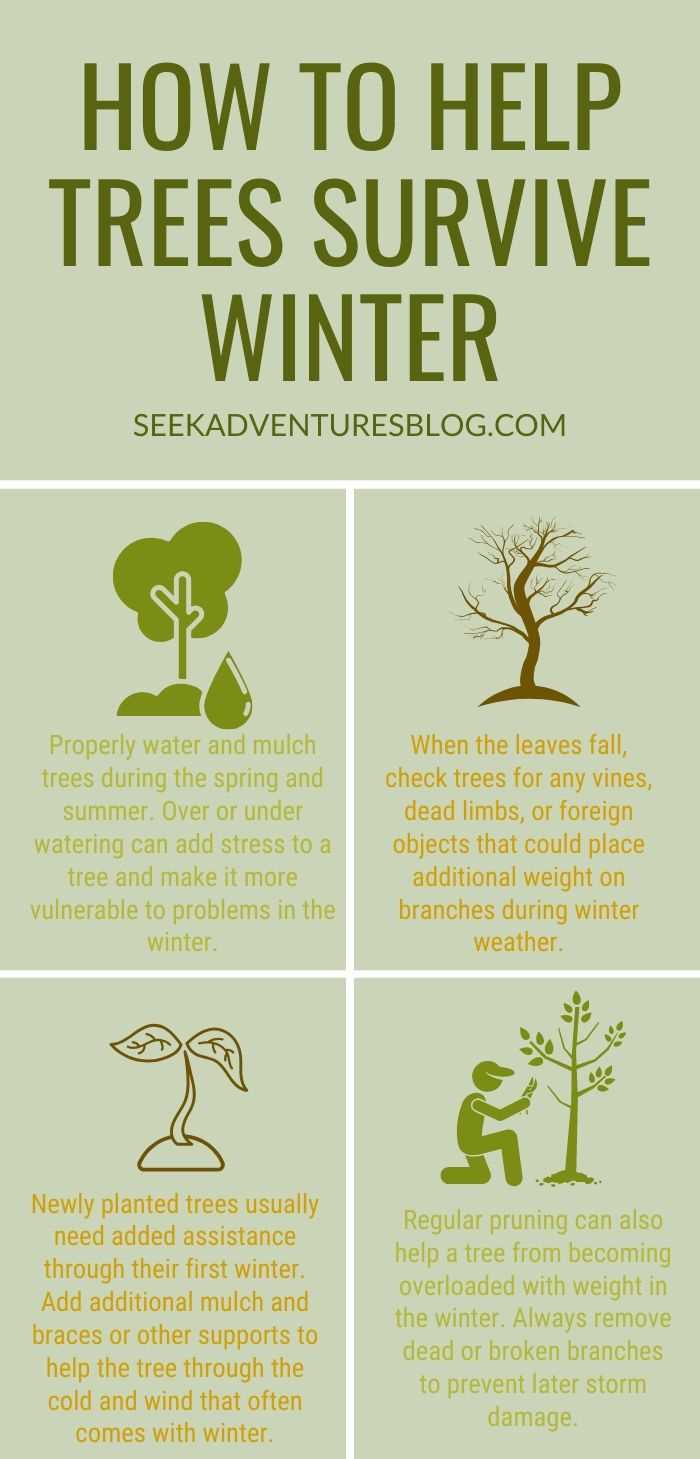
Regular fertilisation helps prevent nutrient deficiencies in trees. Some of the key nutrients that trees require include nitrogen, phosphorus, and potassium. These nutrients are essential for various tree functions, such as photosynthesis, root development, and overall growth. Fertilisers provide a concentrated source of these nutrients, ensuring that trees have a sufficient supply throughout the year.
2. Enhanced Growth and Development
Fertilising trees promotes enhanced growth and development. By enriching the soil with essential nutrients, fertilisers provide trees with the energy they need to produce new leaves, flowers, and fruits. Well-nourished trees are more likely to grow faster, increase their overall size, and develop stronger branches and roots. This can improve the overall appearance and structure of the trees, making them more resistant to damage from wind, pests, and other environmental factors.
3. Improved Disease Resistance
Trees that receive proper fertilisation are more likely to have improved disease resistance. Nutrient-rich soil helps strengthen a tree’s immune system, making it better equipped to fight off common tree diseases and pests. Fertilisers can also help trees recover from damage caused by disease or environmental stress factors. By keeping trees healthy and robust, they are better prepared to withstand the harsh conditions of winter and prevent winter-related diseases.
4. Increased Longevity
Fertilising trees can contribute to their increased longevity. Proper nutrition ensures that trees have the resources they need to thrive and live longer. When trees are well-fed, they are better equipped to withstand the challenges posed by extreme weather conditions, pests, diseases, and other environmental stresses. By investing in regular fertilisation, property owners can help their trees live longer, adding beauty and value to their landscape for years to come.
In conclusion, fertilising trees is crucial for their overall health and well-being. It prevents nutrient deficiencies, enhances growth and development, improves disease resistance, and increases longevity. By incorporating fertilisation into their tree care routine, property owners can ensure that their trees remain healthy, vibrant, and resilient, even during the winter months.
Types of Fertilisers for Trees
When it comes to fertilising trees, it’s important to choose the right type of fertiliser to ensure optimal growth and health. There are several types of fertilisers available, each with its own benefits and considerations. Here are some of the most common types of fertilisers for trees:
1. Organic Fertilisers
- Organic fertilisers are derived from natural sources such as decomposed plant and animal matter.
- They provide a slow release of nutrients, allowing trees to absorb them gradually over time.
- Organic fertilisers also improve soil structure and increase microbial activity, leading to healthier root systems.
- Examples of organic fertilisers include compost, manure, and bone meal.
2. Inorganic Fertilisers
- Inorganic fertilisers are chemically manufactured and typically contain a higher concentration of nutrients compared to organic fertilisers.
- They provide an immediate boost of nutrients to trees, but they can also leach out of the soil quickly.
- Inorganic fertilisers are available in granular or liquid form and can be easily applied to trees.
- Examples of inorganic fertilisers include ammonium nitrate, ammonium phosphate, and potassium sulfate.
3. Slow-Release Fertilisers

- Slow-release fertilisers are designed to release nutrients gradually over an extended period.
- They provide a constant supply of nutrients to trees and reduce the risk of nutrient leaching.
- Slow-release fertilisers are available in various forms, including coated granules and pellets.
- Some slow-release fertilisers can last several months, reducing the frequency of applications.
4. Liquid Fertilisers
- Liquid fertilisers are mixed with water and applied to trees using a sprayer or watering can.
- They are quickly absorbed by tree roots and provide an immediate nutrient boost.
- Liquid fertilisers are convenient and can be easily adjusted to meet the specific nutrient needs of trees.
- They are often used as a supplement to granular or slow-release fertilisers.
5. Balanced Fertilisers
- Balanced fertilisers contain a mix of nitrogen, phosphorus, and potassium (N-P-K) in equal proportions.
- They provide a well-rounded nutrient package and are suitable for overall tree health and growth.
- Balanced fertilisers are often used as a general-purpose fertiliser for trees.
- They can be combined with other fertilisers to tailor the nutrient content to specific tree needs.
It’s important to consider the specific needs of your trees, soil conditions, and nutrient deficiencies before choosing a fertiliser. Consulting with a professional arborist or horticulturist can help you determine the best type and application method for your trees.
Understanding the Nutritional Needs of Trees
Trees, like all living organisms, require proper nutrition to grow and thrive. Understanding the nutritional needs of trees is crucial for maintaining their optimal health and promoting optimal growth.
Macro and Micro Nutrients
Trees require a combination of macro and micro nutrients to thrive. Macro nutrients are required in larger quantities and include elements such as nitrogen, phosphorus, and potassium. These nutrients play a crucial role in tree growth, root development, and overall health.
Micro nutrients, on the other hand, are required in smaller quantities but are equally important. These include elements such as iron, manganese, and zinc, which facilitate essential biochemical processes within the tree.
The Role of Soil
Soil plays a critical role in providing trees with essential nutrients. The composition and pH level of the soil determine the availability of nutrients to the trees. It is important to conduct regular soil tests to determine its nutrient content and pH level. Based on the results, appropriate fertilizers can be applied to ensure the tree’s nutritional needs are met.
Fertilizers for Tree Nutrition
Fertilizers are used to supplement the nutrient requirements of trees when the soil cannot provide all the necessary nutrients. They come in various forms, including granules, liquid solutions, and slow-release capsules. The choice of fertilizer depends on the specific needs of the tree and should be guided by a professional arborist.
When selecting a fertilizer, it is important to consider its nutrient content. Fertilizers are typically labeled with three numbers, indicating the amount of nitrogen (N), phosphorus (P), and potassium (K) they contain. For example, a 10-10-10 fertilizer contains 10% nitrogen, 10% phosphorus, and 10% potassium.
Timing and Application of Fertilizers
Fertilizers should be applied at the appropriate time and in the correct manner to ensure maximum effectiveness. In general, fertilizing should be done in late winter or early spring before the tree starts its active growth phase. This allows the tree to use the nutrients efficiently and promotes healthy growth.
When applying fertilizers, it is important to follow the instructions provided by the manufacturer. Applying too much fertilizer can lead to nutrient imbalance and environmental pollution. Similarly, applying too little fertilizer may not provide the tree with the necessary nutrients.
Monitoring and Adjusting Nutrient Levels
Regular monitoring of tree health and nutrient levels is essential for identifying any deficiencies or imbalances. This can be done through visual inspections, soil tests, and foliar analysis. If deficiencies or imbalances are identified, appropriate fertilizers can be applied or other corrective measures can be taken to restore the tree’s nutrient levels.
In conclusion, understanding the nutritional needs of trees is crucial for their optimal growth and health. Providing the right combination of macro and micro nutrients, monitoring soil nutrient levels, and timely fertilizing are essential for maintaining healthy and thriving trees.
Assessing the Soil Quality
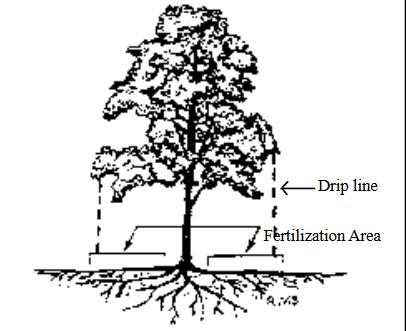
Before fertilising your trees for optimal growth and health, it is important to assess the quality of the soil in which they are planted. This will ensure that you provide the appropriate nutrients and make any necessary adjustments to the soil.
1. Soil Testing
Performing a soil test is a crucial step in assessing soil quality. There are different soil testing methods available, such as using a soil testing kit or sending a soil sample to a laboratory for analysis. The test results will provide valuable information about the nutrient content, pH level, and organic matter content of the soil.
2. Nutrient Analysis
Based on the soil test results, you can determine the nutrient deficiencies or excesses in the soil. Nutrients that are often tested include nitrogen, phosphorus, potassium, calcium, magnesium, and various trace elements. Understanding the nutrient levels in the soil will help you choose the appropriate fertilisers to address any deficiencies.
3. pH Level
The pH level of the soil is another important factor to consider. Different plants have different pH requirements for optimal growth. Most trees prefer a slightly acidic to neutral soil pH range. If the soil pH is too high or too low, certain nutrients may become unavailable to the trees. Adjusting the pH level can be done through the application of soil amendments.
4. Organic Matter Content
The organic matter content of the soil is an indicator of its fertility and ability to retain moisture. Soils with high organic matter content are generally more fertile and retain moisture better. Adding organic matter, such as compost or well-rotted manure, can help improve soil structure and provide essential nutrients for tree growth.
5. Soil Texture
The texture of the soil, which refers to the relative proportions of sand, silt, and clay particles, affects its drainage and fertility. Sandy soils drain quickly but may have lower nutrient-holding capacity. Clay soils have good nutrient-holding capacity but may drain poorly. Ideal soil texture for tree growth is loamy, which is a balanced mix of sand, silt, and clay.
6. Compaction
Soil compaction can limit root growth and lead to poor tree health. Compacted soil has reduced pore space, which restricts the movement of air, water, and nutrients. Compaction can be caused by various factors such as foot traffic or heavy machinery. To alleviate soil compaction, aerating or loosening the soil is recommended before fertilisation.
By assessing the soil quality through testing and analysis, you can tailor your fertilisation approach to provide the necessary nutrients and make any adjustments required for optimal tree growth and health.
When to Fertilise Trees
Fertilising trees at the right time is crucial for their optimal growth and health. The timing of fertilisation can vary depending on the type of tree and its specific needs. Below are some general guidelines on when to fertilise trees:
Spring
- In early spring, before the trees start to leaf out, is a good time to fertilise. This will provide nutrients that the tree needs for rapid growth and development during the upcoming growing season.
- During this time, it is important to use a slow-release fertiliser that will slowly release nutrients over time, providing a continuous supply of nourishment for the tree.
- Avoid fertilising during heavy rainfall or when the ground is saturated to prevent nutrient runoff.
Summer
- In late summer, after the tree has finished its major growth for the season, you can consider applying a light application of fertiliser to replenish any nutrients that may have been depleted.
- Be cautious when fertilising during hot and dry conditions, as it can stress the tree and potentially cause leaf burn. It is best to water the tree thoroughly before and after fertilising to help distribute the nutrients and prevent any negative effects.
Fall
- Fertilising in the fall is generally not recommended, as it can stimulate new growth that may not have enough time to harden off before winter.
- If you do choose to fertilise in the fall, do so early in the season to give the tree enough time to absorb the nutrients and prepare for dormancy.
Winter
- Fertilising during winter is generally not necessary, as most trees are dormant and not actively growing during this time.
- However, if your tree is showing signs of nutrient deficiency, such as yellowing or stunted growth, consult with a professional arborist before applying any fertiliser during the winter months.
It is important to note that the specific timing for fertilising trees may vary based on the climate, soil conditions, and the specific needs of the tree species. Consulting with a professional arborist or horticulturist can provide specific recommendations for fertilising your trees.
Application Methods for Fertilising Trees
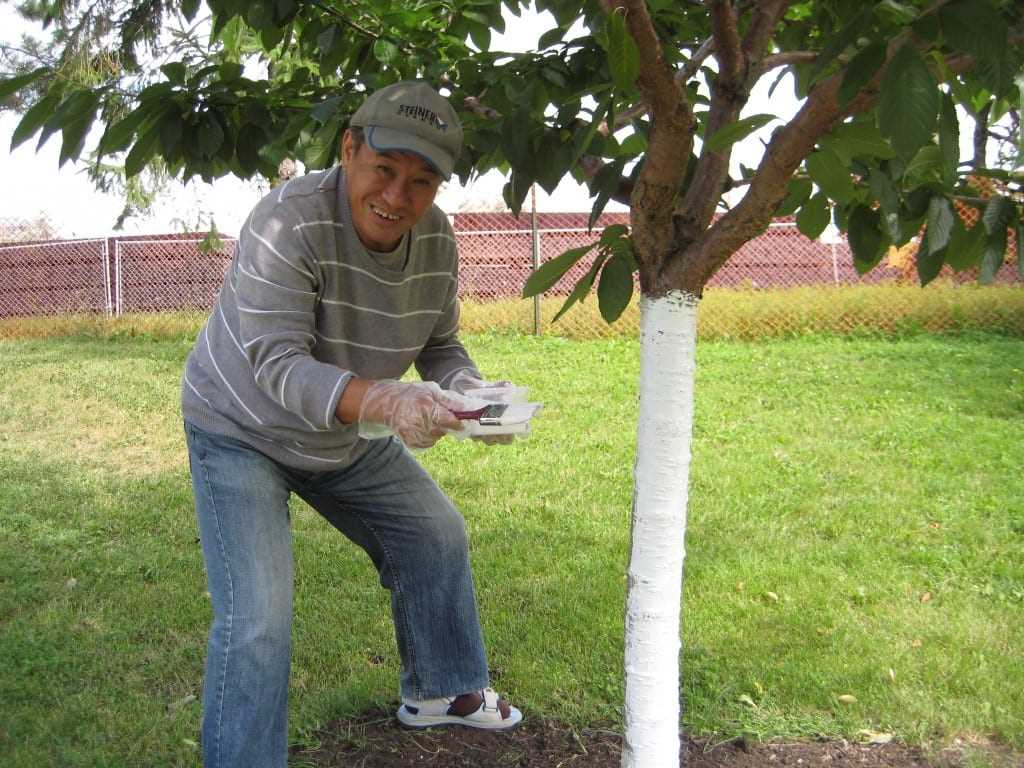
Proper application of fertilisers to trees is crucial for their optimal growth and health. There are several methods to consider when applying fertiliser to trees, depending on the tree species, size, and specific needs. Here are some common application methods:
- Broadcast Spreading: This method involves evenly distributing the fertiliser over a large area around the tree. It is suitable for larger trees or when fertilising multiple trees in a general area. Use a spreader to ensure an even application.
- Deep Root Feeding: This method involves injecting the fertiliser directly into the soil beneath the tree’s root zone. It is suitable for providing nutrients to the roots more efficiently. Specialised equipment such as a soil needle or injection probe is used for deep root feeding.
- Tree Injection: This method involves injecting the fertiliser directly into the tree’s trunk or branches. It is commonly used for targeted treatment of specific nutrient deficiencies or pest-related issues.
When applying fertiliser to trees, it is important to follow these general guidelines:
- Read and follow the instructions on the fertiliser label regarding application rates and timing.
- Apply fertiliser evenly and avoid concentrating it in one area to prevent root burn or damage.
- Consider the age of the tree and its specific nutrient requirements when choosing a fertiliser. Young trees may need different nutrient ratios compared to mature trees.
- Apply fertiliser during the appropriate season. In general, it is best to fertilise trees in late winter or early spring when they are actively growing and can absorb nutrients more efficiently.
- Water the area thoroughly after fertilising to ensure proper nutrient uptake by the roots.
Keep in mind that it is always advisable to consult a professional arborist or garden expert for specific recommendations on fertilising trees, as different tree species may have varying nutrient requirements.
Avoiding Common Mistakes in Fertilising Trees
Properly fertilising trees is essential for their optimal growth and health. However, there are several common mistakes that people often make when it comes to fertilising trees. By avoiding these mistakes, you can ensure that your trees receive the nutrients they need to thrive during the winter season.
1. Over-fertilising
One of the most common mistakes in fertilisation is over-fertilising. Applying too much fertiliser can result in nutrient burn, which can damage the tree’s roots and foliage. It is important to carefully follow the recommended dosage on the fertiliser package and avoid excessive application.
2. Applying fertiliser too late or too early
Timing is key when it comes to fertilising trees. Applying fertiliser too late in the season may not provide enough nutrients for the tree to withstand the winter. On the other hand, applying fertiliser too early can stimulate new growth that is susceptible to frost damage. It is important to follow the fertilising schedule recommended for your specific tree species.
3. Using the wrong type of fertiliser
Not all fertilisers are suitable for trees. Using the wrong type of fertiliser can lead to nutrient imbalances and hinder the tree’s growth. It is important to choose a fertiliser that is specifically formulated for trees and contains the right balance of nutrients, such as nitrogen, phosphorus, and potassium.
4. Neglecting soil testing
Before fertilising your trees, it is crucial to conduct a soil test to determine its nutrient needs. Neglecting soil testing can result in over- or under-fertilisation, as you may not be aware of the soil’s nutrient deficiencies or excesses. By conducting a soil test, you can tailor your fertiliser application to suit the specific needs of your trees.
5. Fertilising too close to the trunk
When applying fertiliser, it is important to spread it evenly over the entire root zone of the tree. Fertilising too close to the trunk can cause root burn and damage the tree’s overall health. It is best to start fertilising at the dripline of the tree and work your way towards the trunk, making sure to cover the entire root zone.
6. Neglecting proper watering
Fertilising alone is not enough to ensure tree health. Proper watering is also crucial for nutrient uptake and overall plant health. Failing to water trees properly can hinder the effectiveness of fertilisers and result in nutrient deficiencies. Make sure to water your trees deeply and regularly, especially during dry periods.
By avoiding these common mistakes in tree fertilisation, you can promote optimal growth and health in your trees during the winter season. Remember to follow the recommended fertilising schedule, choose the right type of fertiliser, conduct soil tests, spread fertiliser evenly, and provide proper watering for your trees.
Benefits of Fertilising Trees for Winter Survival
1. Enhanced Root System Development
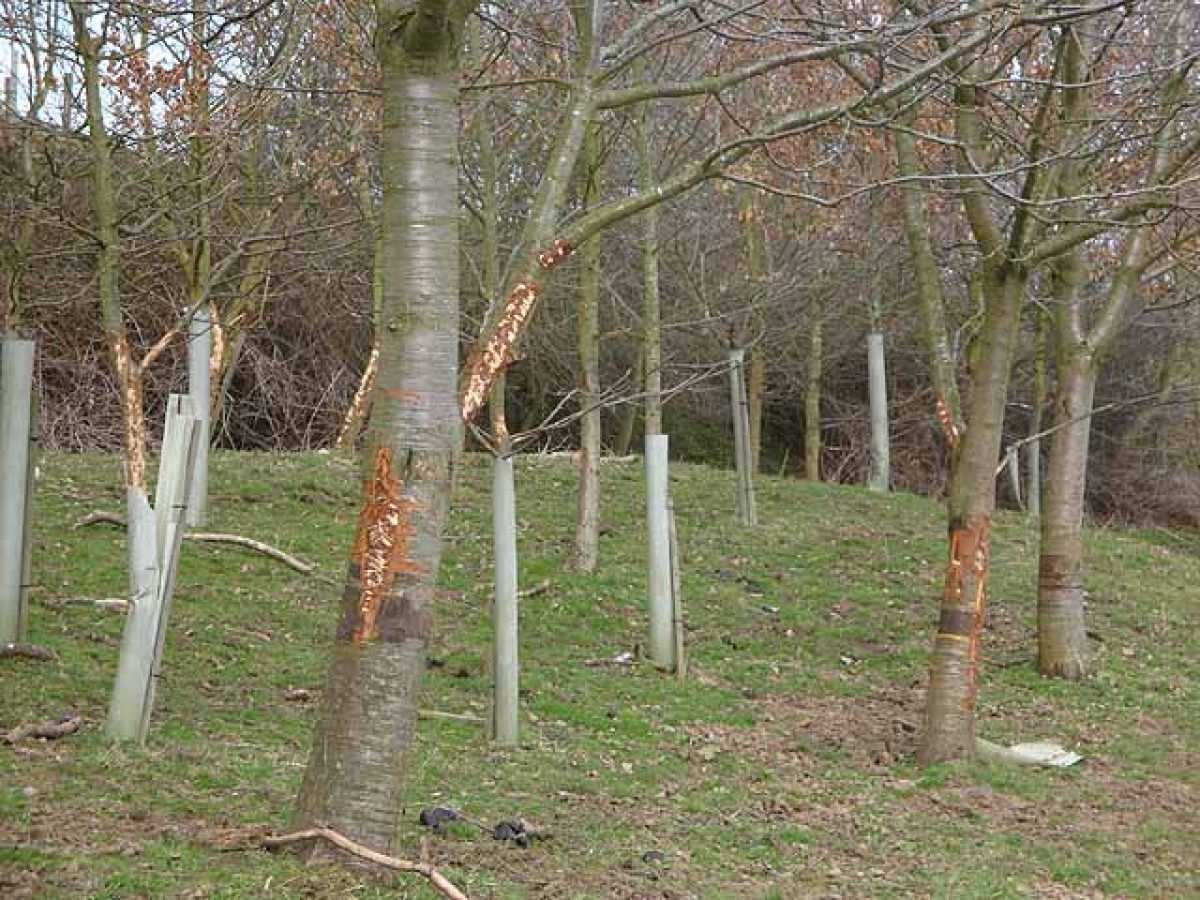
Fertilising trees before winter helps to promote the development of a strong and healthy root system. This is essential for trees to withstand the harsh conditions of winter, such as freezing temperatures and strong winds. A well-developed root system allows trees to absorb nutrients and water more efficiently, which contributes to their overall survival and health during the winter months.
2. Increased Winter Hardiness
Fertilisers specially formulated for winter survival contain essential nutrients that help trees become more resilient to winter stress. These nutrients, such as potassium and phosphorus, strengthen tree tissues and increase their ability to resist damage from freezing temperatures. Fertilising trees for winter survival can significantly enhance their winter hardiness, making them less susceptible to winter injury or death.
3. Improved Disease and Pest Resistance
Properly fertilised trees are more capable of defending themselves against diseases and pests. Winter conditions can weaken trees, making them more vulnerable to infestations and infections. By providing trees with the necessary nutrients, fertilisation strengthens their immune systems and increases their resistance to common winter pests and diseases. This helps to ensure that trees remain healthy and strong throughout the winter season.
4. Enhanced Growth and Recovery in Spring
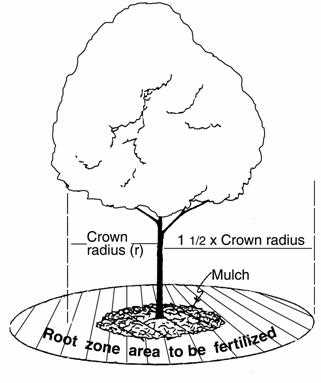
Fertilising trees before winter helps to stimulate root growth and nutrient absorption, which provides a solid foundation for growth and recovery in the spring. When trees receive adequate nutrients, they can better store energy reserves and remain dormant during the winter. This results in a faster and more vigorous growth in the following spring, allowing trees to bounce back from the harsh winter conditions more quickly and effectively.
5. Overall Health and Longevity
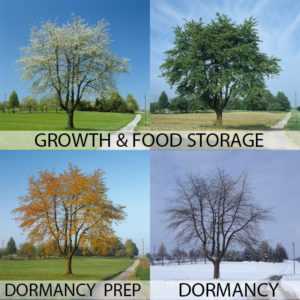
Fertilising trees for winter survival contributes to their overall health and longevity. By providing the right nutrients at the right time, fertilisation strengthens trees from the roots to the branches, ensuring their vitality and resilience. Healthy trees are better equipped to withstand the challenges of winter, such as frost, drought, and disease. They have a greater chance of surviving the winter and thriving for many years to come.
| Summary | |
|---|---|
| Fertilising trees for winter survival offers numerous benefits for their growth and health: | |
| Enhanced Root System Development: | Promotes a strong and efficient root system. |
| Increased Winter Hardiness: | Makes trees more resistant to freezing temperatures. |
| Improved Disease and Pest Resistance: | Strengthens trees’ immune systems. |
| Enhanced Growth and Recovery in Spring: | Stimulates root growth for faster spring growth. |
| Overall Health and Longevity: | Contributes to trees’ long-term survival and vitality. |
Question-answer:
Why is it important to fertilize trees in preparation for winter?
Fertilizing trees before winter is important because it provides them with necessary nutrients to stay healthy and strong during the cold months. Proper nutrition helps trees resist diseases and pests, and helps them recover more quickly when spring arrives.
When is the best time to fertilize trees before winter?
The best time to fertilize trees before winter is in late autumn, around October or November. This allows the trees to absorb the nutrients and store them in preparation for the dormant winter period.
What kind of fertilizer is best for trees before winter?
The best fertilizer for trees before winter is a slow-release or organic fertilizer. These types of fertilizers provide a steady supply of nutrients over a longer period of time, ensuring that the trees have a consistent supply of food throughout the winter months.
How often should trees be fertilized before winter?
Trees should typically be fertilized once a year before winter. However, the frequency may vary depending on the specific needs of the trees and the type of fertilizer being used. It’s best to consult with a professional arborist or horticulturist for specific recommendations.
Are there any specific nutrients that trees need before winter?
Yes, there are several specific nutrients that trees need before winter. These include nitrogen, phosphorus, and potassium, as well as other micronutrients like iron and zinc. These nutrients help promote healthy growth, disease resistance, and overall tree vigor.
Can over-fertilizing trees before winter be harmful?
Yes, over-fertilizing trees before winter can be harmful. Too much fertilizer can cause excessive growth, which may make trees more susceptible to frost and other winter damage. It can also lead to nutrient imbalances in the soil, which can negatively affect the overall health of the trees.







